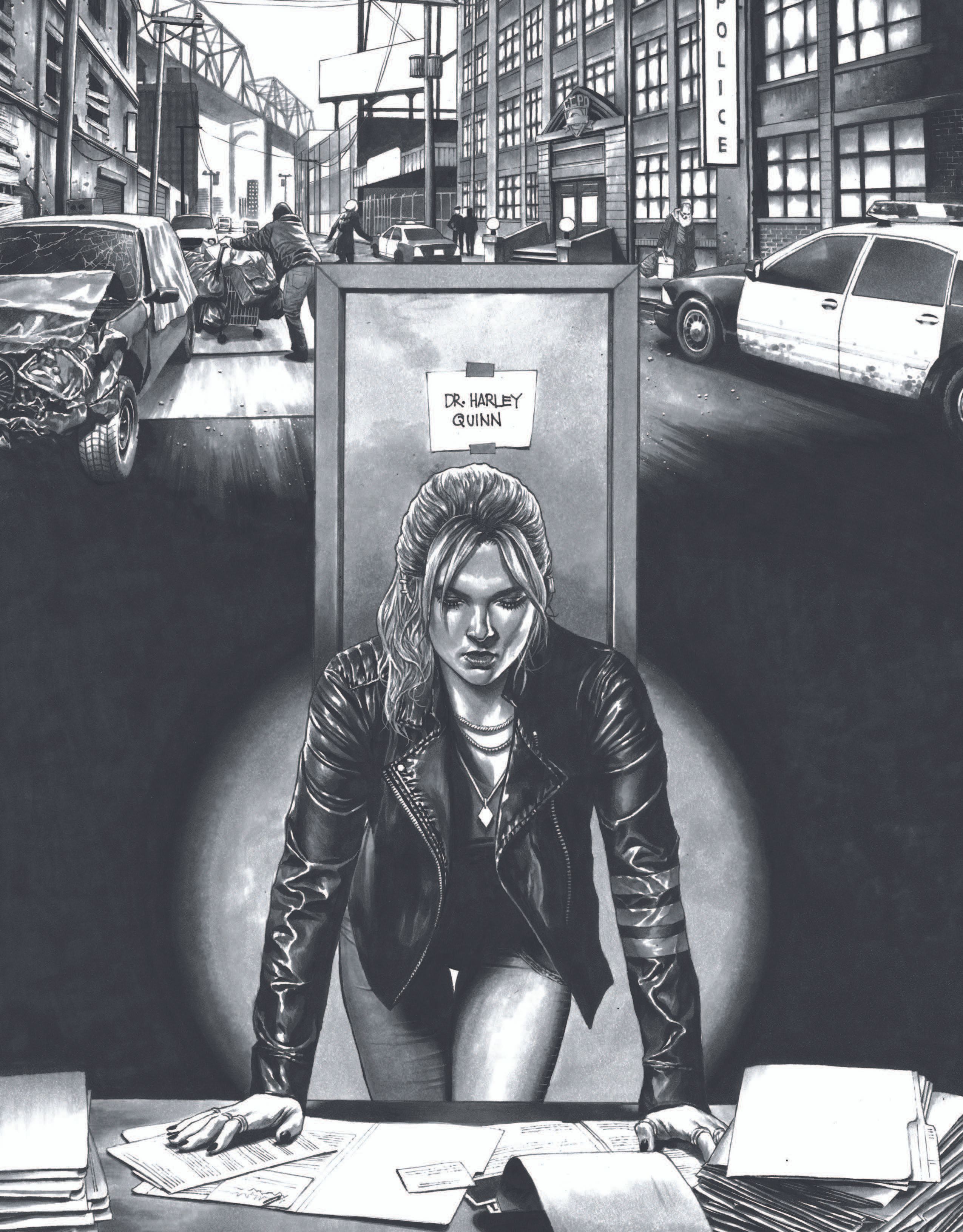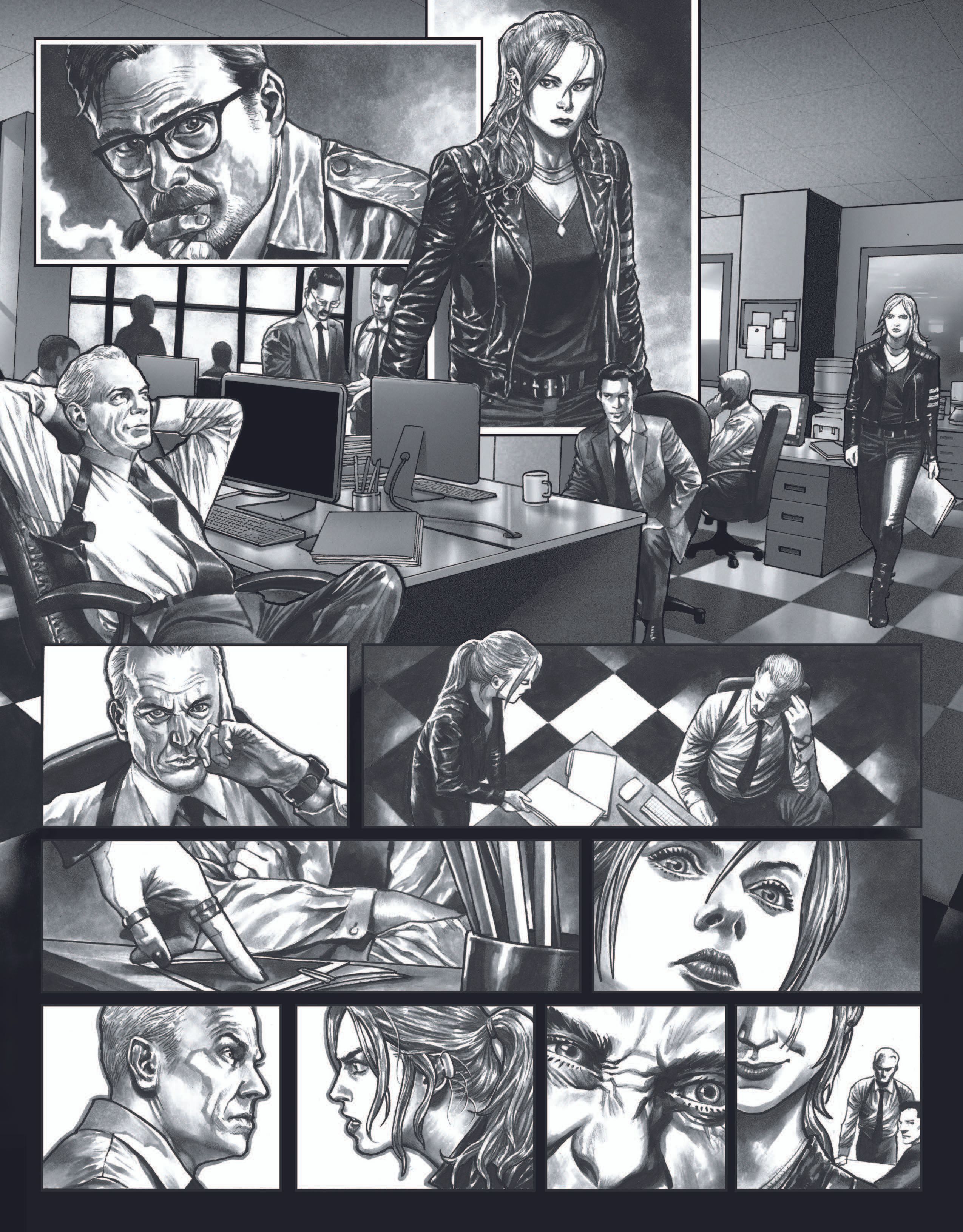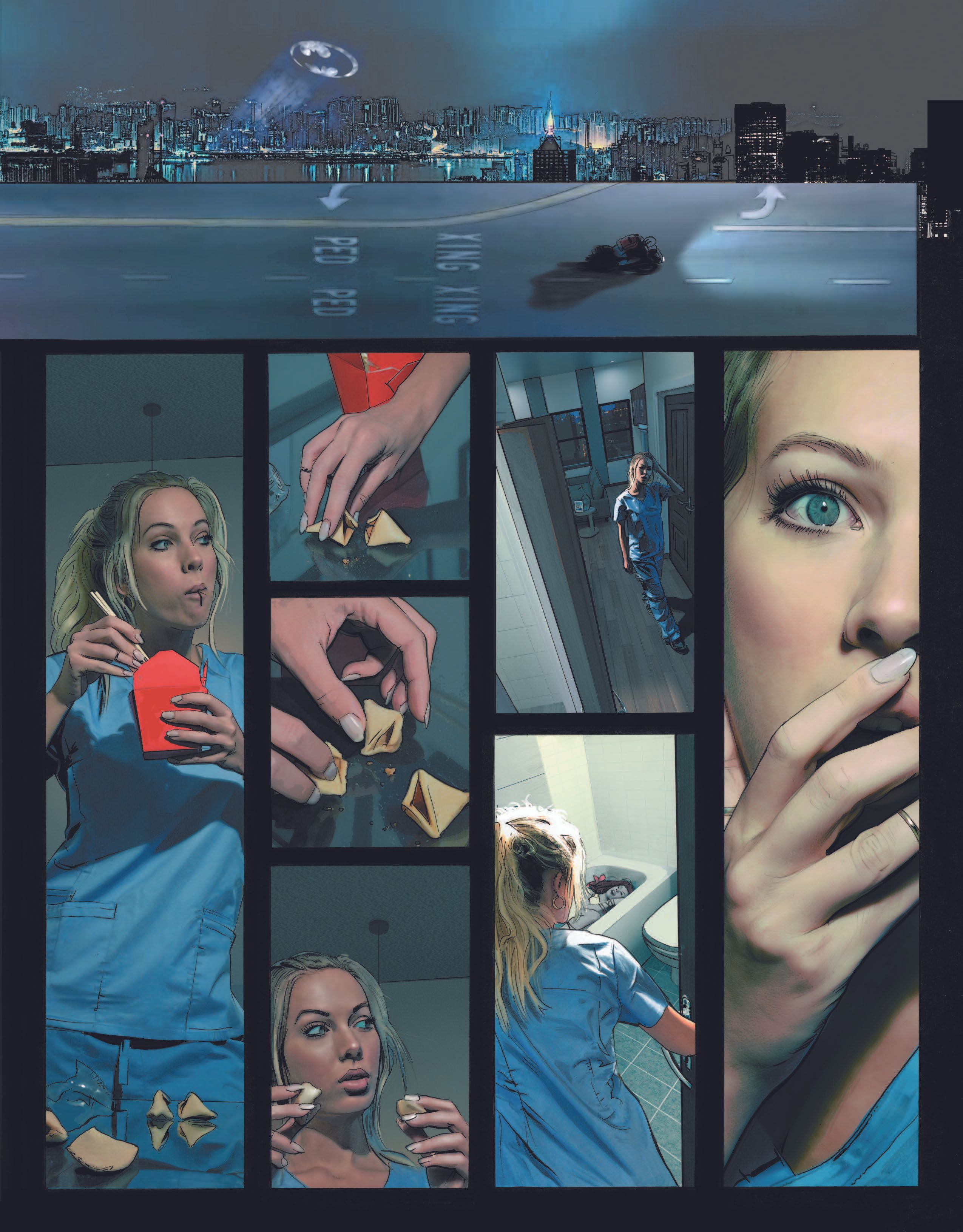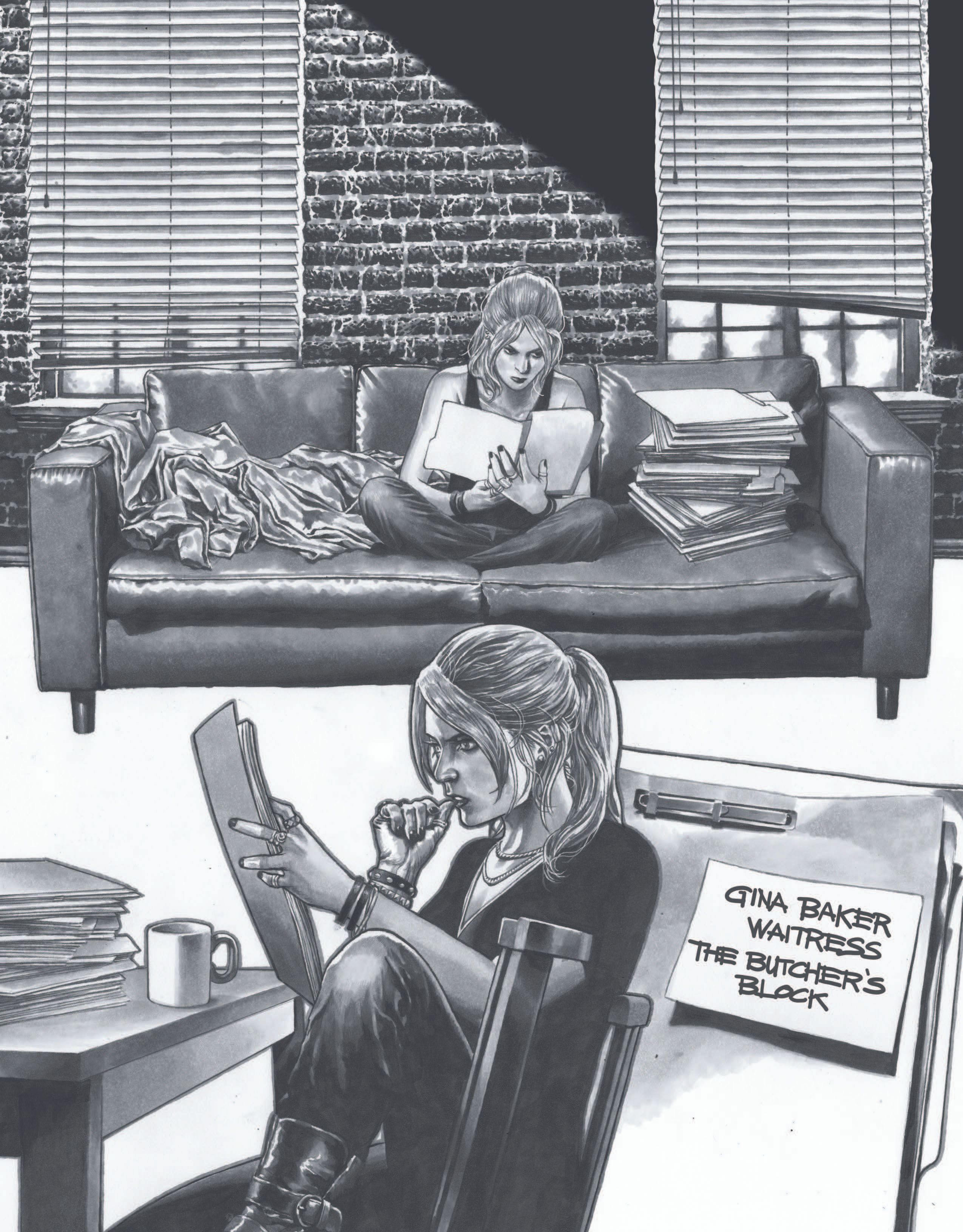The Joker and Harley Quinn have one of the most complicated relationships in the DC Universe. What began as a toxic pairing of two individuals has evolved into Harley Quinn being able to stand out on her own, starring in a successful solo comic series. Meanwhile, Joker has continued to plague Batman and other DC heroes as a member of Lex Luthor's Legion of Doom in the pages of Justice League.
Now, an upcoming DC Black Label series looks to bring Joker and Harley Quinn back together in a completely new environment. Joker/Harley: Criminal Sanity by Kami Garcia (Teen Titans: Raven), Mike Mayhew (The Star Wars) and Mico Suayan (Bloodshot: Reborn) transforms Harley into a forensic psychiatrist and profiler for the Gotham City Police Department.
Criminal Sanity follows Harley as she investigates a series of gruesome displays of murder throughout the city, with the Joker as a prime suspect. Harley is also reminded of an unsolved murder that's believed to be by the Joker that hits too close to home. CBR spoke with Kami Garcia and her consultant and colleague, Dr. Edward Kurz, a psychological/forensic expert, about Joker/Harley: Criminal Sanity. The duo discusses turning Harley Quinn into a forensic psychiatrist, some of the many misconceptions between psychopaths and serial killers, and the role Batman plays in the Black Label series.
CBR: Kami, can you walk us through how you came up with the idea of tackling Joker and Harley Quinn in Criminal Sanity, with one a profiler and the other a serial killer she's trying to catch?
Kami Garcia: Basically, it started out as a possible YA title. How does a regular adorable, 6- to 8-yea- old turn into the Joker? But I wanted to be incredibly authentic and forensically accurate. I worked with Ed [Kurz] and his partner, who was also a forensic psychiatrist and behavior analyst. They were my consultants for an older X-Files book that I did for Fox and McMillan. I was pitching it to him, but also asking questions, and what became clear is that it was too dark for YA. I was a teacher for 17 years and I spent a lot of time with teenagers. And to tell the story I really needed to tell was, it wasn't something I was comfortable with doing in a YA format.
So I thought the book was dead. But I was encouraged by Michelle Wells, who was my Raven editor to age it up and see what happens. Then Ed and I started having a lot of “What If?” talks. What if I wrote the Joker older? What would that profile look like? And then the adult version of our Joker started to feel very real. I've always wanted to write a killer novel, so I told Ed that Harley is going to have your skillset. She's going to be a forensic psychiatrist and she's going to be brilliant. She's going to be a behavior analyst at the top of her game. And I had to reassure him that Harley will not fall in love with the Joker. Once I said that, Ed was totally down with the project. Because Harley falling in love with the Joker doesn’t happen in my world.
Dr. Edward Kurz: Yeah, Harley is not an easily manipulated person. And you had a really good article on Young Justice, about the multiverse is so big that there is some version of Harley out there that is more independent. But the reality is we wanted to make an edgier version that we hadn’t seen before, and Kami was adamant that she wanted a strong character.
Garcia: And Ed really wanted to see that character. He wanted to see that Harley investigating and actively pursuing the Joker.
Kurz: Because these are the Harleys that I work with.
Garcia: We wanted to show that there are a lot of profiler and cop stuff on TV and in movies, and we wanted to show what it’s like for someone with that skillset. How did they put these pieces together? What are they analyzing? I want to know all these tiny things that go into having this kind of a job.
There are so many misconceptions because it's TV and people are assuming every serial killer has a signature. So that was one of the reasons why it was really important to me to have a consultant on this and the previous project. As someone who has predominantly written urban fantasy rooted in reality, I believe that everything is really authentic and true. Except for the one part I'm asking you to believe that the Joker is a real person. I remember seeing the first Superman movie, and I totally couldn't believe there was a Superman. There’s a level of authenticity that I think if you really create a character, that's grounded in whatever you're professing they're grounded in, that they do come to life on the page.
In the first issue, you dedicate some page time to specify the differences between psychopaths and serial killers. Can both of you explain or breakdown some of the differences and similarities between the two?
Garcia: For me, the reason that I wanted to break it down, is one of the most important things to me as someone who knows a lot of cops, is there are a lot of people who like to watch procedural TV. There's a lot of confusion about what psychosis is and what psychotic means. And there's a lot of people who think that because the things that some of these guys like [Ted] Bundy do is so heinous, they believe that every serial killer is insane or psychotic. They can't fathom the idea that a sane person could do these horrible things. There's this confusion that being deprived is the same thing as being psychotic, which is not true.
And I felt because of the way this series is set up, and because of the investigation and because of how important it is for the reader to understand upfront that this Joker is seen, it needed to be explained. Ed says it's very common for forensic psychiatrists to do seminars for law enforcement, where they dispel these myths and give them more information and tools to be able to do their job better. And I told Ed, “I'm going to write this, but will you painstakingly go over this with me?”
Kurz: Because in my world this stuff comes up all the time. Where someone comes in, and they are facing a huge sentence. And oftentimes I’ll get an inmate who is trying to go to Arkham to avoid their sentence. In my world, “Criminal Sanity” isn’t a phrase that exists, but as a play on words, you are criminally responsible. And you would go to supermax or a regular prison, and you would not exploit a mentally ill patient.
A lot of inmates like to try and avoid responsibility. They blame different diets, get a different room change, try and be near a peer they're trying to bully, and they will pretend to hear voices. But when you know their world, doing things like profiling, you can kind of see it from their perspective. If they see someone that reminds them of a family member, like, “Oh, this person is not just trying to manipulate me,” because they see everybody is doing that. This person actually needs medication, and we need to intervene and help them eat the pill and feel safe, and not feel like somebody is trying to gas the room or poison the food.
Garcia: Because of the common misconceptions out there, a lot of people go down a certain narrative road, and just because that's the road, they assume it’s the right route. And what I always try to remind Ed is not many writers have a net. I became friends with someone who has these dreams, interests and skills, the things that I’m really interested in and I want to write about is Kismet; it's very unusual.
One day I was reading some psychology magazine and I said, “Listen to what this says!” This is why writers are led astray, because they're going to places that they think are legitimate sites, or magazines or articles that they think are written by psychiatrists, and they're trying to get this information, and then the information is not correct. And then you realize how much misinformation there is out there. So if you don't have someone like Ed to put you back on the right track, it's really easy to watch all these YouTube videos and think you know everything about profiling.
Kurz: And part of it is once you are able to capture the feel of what it's like to actually be around one of these personalities that I interact with on a daily basis, you realize you are in danger when you’re in front of them. But that you can know the difference between that version of the person, and note that they're very dangerous. And sometimes you can interview them, other times you have to come back later. I find it scarier when you have a person who is like a chameleon, masking their true self. Who looks very similar to friends or family.
Garcia: And looks like a regular guy and interacts like a regular person. But you have no idea that person has no empathy, no remorse, because they speak normally.
Kurz: But that doesn't mean that they don't have extreme behavior. Now, psychotic people have their own logic. And you can sort of learn how to become a psychotic whisperer, and sort of understand what their view of the world is, and try and get them closer to reality. But the world of extreme behavior in a person that is sane, it just has some serious, evil interest. That is something that even though it's hard to relate to, it doesn't mean that they don't know what they're doing.
They know that they need to avoid criminal detection and avoid responsibility for it. But they have no problem doing things against society. And I think that is an important distinction.
Bringing Batman into the conversation, will there be any characters from the Batman world or the Batman Family that we see swoop in and out of the story? I know we see Batman for a split second in the first issue. And Commissioner Gordon also plays a role.
Garcia: Batman exists in this universe and there is the cameo that you mentioned in the first issue, so we know where he is and what he's up to. But he is not part of the story. He's not going to be interacting with the Joker and Harley. It's not a Batman story. Ed and I talked about it, and he said you want to establish that he's part of this world, but you have to do it really carefully.
Because if we see a big Batman scene where he's talking, or we see a lot of interaction, you're setting the reader up to think we're going to keep seeing him. You want the reader to know Batman exists and he's out there, but there is not going to be Batman Family members showing up. There may be some other characters that we've seen in the Batman universe like Gordon. And we have references like the Bat-signal, but he’s not going to be featured.
Batman isn’t the person pursuing the Joker in the series. Harley is the one tasked with hunting Joker down and saving people.
If Criminal Sanity does well, do you think there's potential for a sequel down the line?
Garcia: My writing partner and I always say, “Never say never.” Ed and I have obviously talked about what happens. Of course, I can’t tell you how this shakes out at the end and what happens to the characters after the last page. We have a lot of ideas about where they would be going and what they would be doing, so it's certainly a possibility. But there are no talks of it and nothing is in the works. But we’ve had lots of conversations about interesting things that can happen.
Kurz: Because the artists brought their A-game to the project, it makes us want to hang out in that world a little bit more.
Garcia: It makes the world and the characters feel more real. They were real to us discussing them all the time. But then when we started seeing art, I was like, “Oh, my God, this is the Harley we were talking about.” Suddenly they looked like and became real people. And the world now looks so real to us.
Joker/Harley: Criminal Sanity goes on sale Oct. 9.





